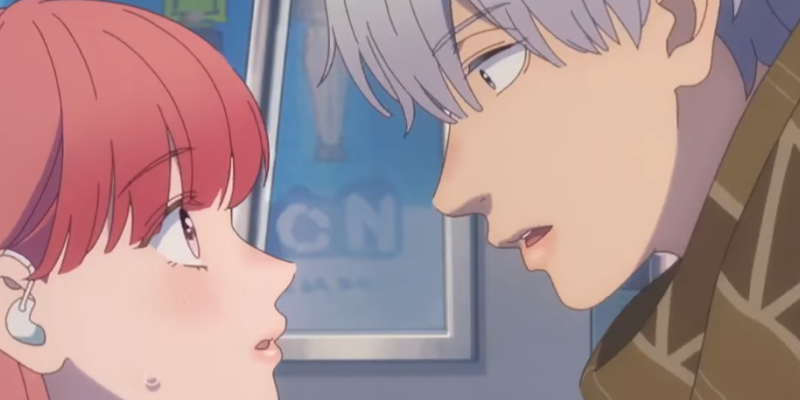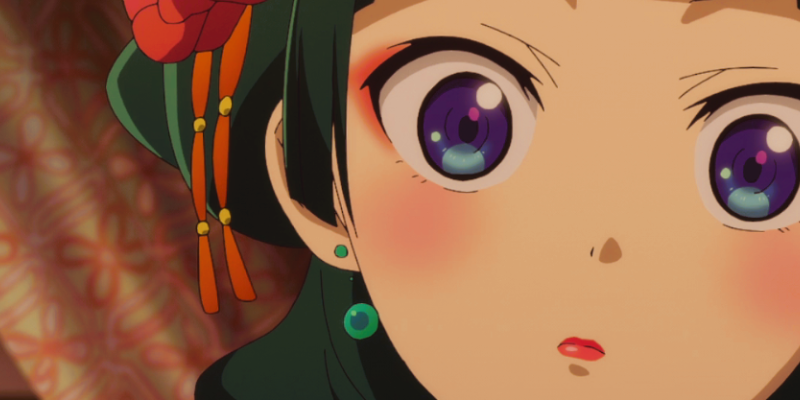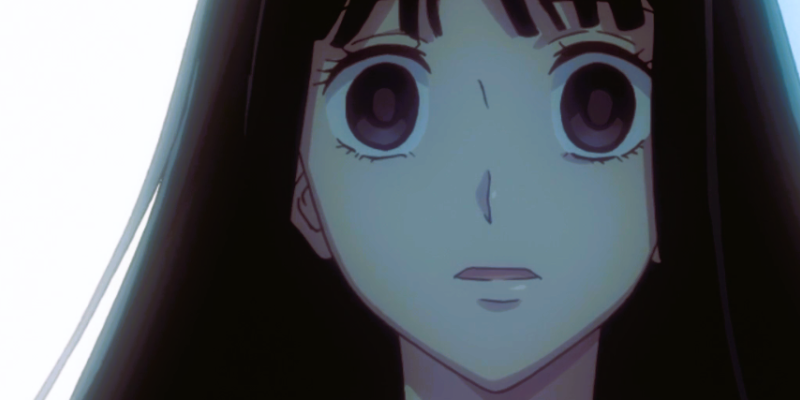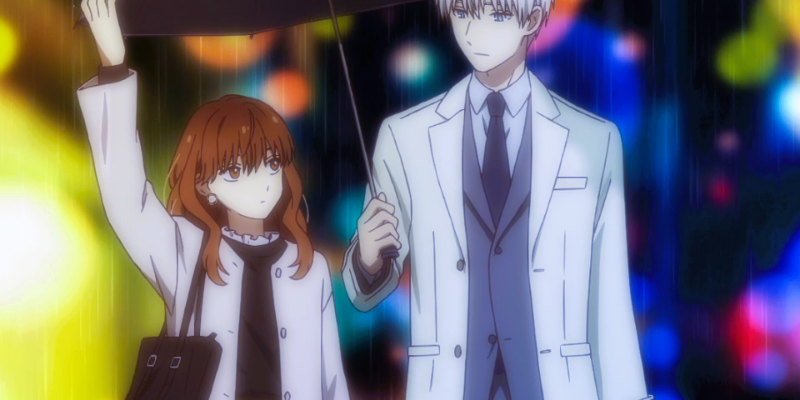Kiznaiver is a 2016 anime produced by studio Trigger and directed by Hiroshi Kobayashi. Though it’s certainly isn’t the best anime made by Trigger, it’s one of my personal favorites from that studio, along with Kill la Kill. Eventually, I may write a technical review of Kiznaiver, but today’s post is a bit different. My goal is to introduce and discuss the main themes in this anime so that I can 1) express my feelings, and 2) promote interest in Kiznaiver.
If you’ve never watched this anime, I hope I can convince you to at least consider it. Also, for those who have already seen Kiznaiver, this article should bring back some memories and get you thinking about things you might have missed the first time. Please enjoy this list of major themes and ideas in Kiznaiver.

Warning: This article will contain spoilers for Kiznaiver in order to properly discuss the series.
Article Contents
- Pain and Apathy
- Human Connection and the Hedgehog’s Dilemma
- Romance and Sexuality
- Self-Injury, Scars, and Suicide
- Trauma and Loss
- Religion
- Acceptance
- The Inhumanity of Systems
- Sources
Pain and Apathy
Pain is at the core of this series and its basic premise. To understand why, we will need to talk about the Kizna System. It’s the name of the process that connects people and their pain to one another. Let me briefly recap how it works. A set number of people are chosen – let’s say seven – for a surgical procedure. The details of the procedure are unknown, but it most likely works using some kind of sci-fi technology.
Whatever the mechanism may be, the pain responses of the seven people become forcibly linked. They share an identical scar in the same place on their bodies. Now, whenever one person is hurt, the pain and injuries are automatically spread between all seven people. When severe pain is felt, the scar lights up with a bright white luminosity. There is a way for the surgeons to “release the Kizna,” or eliminate the links. However, it’s not reliable, as we see certain characters remaining linked after the release.

The seven people are now connected by their pain. Early on, the narrative explores only physical pain. Later on, though, the story also tackles emotional pain. Both can be shared through the Kizna System. There are also slight distinctions made in the types of emotional pain felt by the characters. Chidori feels the acute pain of jealousy and heartbreak. Maki’s longer-lasting pain, on the other hand, is rooted in her memories of a major trauma.
Kiznaiver points out that some people process pain very differently. For instance, there are masochists. Whether it’s sexual or just emotional, masochists gain gratification from pain. The obvious example is Hisomu, a sexual deviant who loves sudden pain. Alternatively, human nature can be sadistic. The best example is Noriko and how she puts people in harm’s way. Early in the series, she seems to enjoy hurting Katsuhira. (The reasons are actually more complex than pure sadism, but we might discuss that later.)

What about people who are numb to pain? Kiznaiver also explores this idea with its protagonist, Katsuhira. Due to reasons that are revealed late in the series, he cannot feel pain. Sometimes a painful act will register as a sensation, but it doesn’t actually hurt. Though he’s apathetic most of the time, Katsuhira’s character journey is really a quest to recover his pain. But wait a second. Most of us are not masochists, at least not to same degree as Hisomu. So why would it be a good thing for us – or for Katsuhira – to feel pain?

Pain is important. It tells us that something is wrong. It tells us our limits. In addition, if we can feel pain, we can potentially develop empathy for the pain experienced by others around us. Katsuhira is utterly uninterested in other people or in himself at the start of the series. Without a normal sense of pain to guide him, he’s lost. If he ever wants to truly understand himself and those around him, he will need to get back his ability to suffer. This is Katsuhira’s character arc in Kiznaiver.

Human Connection and the Hedgehog’s Dilemma
It’s cliché to say, but humans are social creatures. The vast majority of us require connection with fellow humans. If we don’t find others to connect with, we will not have stable or fulfilling lives long-term. I am an introvert who needs plenty of alone time. Even so, my life is most exciting and worthwhile when I’m actively interacting with others. Even though I struggle with social phobia, I need some socialization to have a life worth living.

In the first episode of Kiznaiver, Noriko said, “Everyone wants to carve their scars into someone else. Everyone wants to connect.” This quote is multi-layered and has more than one meaning. But for our current purposes, it is simple enough: it shows that Noriko, like any human, wants to be connected to others. She may verbally deny it, but internally, she knows she is no exception to the rule. Noriko wants connection more than anyone else – that’s why she subconsciously clung to her Kiznaiver bonds after they were supposedly removed.
We’ve established that people need social connection. But relationships are difficult and painful. This brings us to the Hedgehog’s Dilemma. A German philosopher by the name of Arthur Schopenhauer came up with the metaphor. Two hedgehogs are spending a cold night together. Naturally, they want to cuddle for warmth. “But they soon felt the effect of their quills on one another, which made them again move apart,” Schopenhauer wrote (Source 1). They kept poking each other with their sharp spines until they had to separate.

This is basically like how humans behave on a psychological level. Sometimes, we hurt each other just by being close to one another. You’re more likely to hurt someone with whom you have a close relationship. The hedgehogs went through trial and error until they found the ideal distance to keep warm without hurting each other. That’s how people make society work. We cooperate and compromise. But it takes a long time to get to that point, and with some people, it won’t work at all.
In Kiznaiver, the seven companions – plus Noriko – show the hedgehog’s dilemma in action. They are constantly fighting while trying to figure out how to get along. Some develop crushes on each other, and everyone gets hurt. Honoka described it during the highly emotional 9th episode. She said, “If you get too close to someone, you have to share your heart with them. You have to reveal yourself to them.” This vulnerability – which can result in getting hurt – is too uncomfortable for the seven teens to handle until very late in the series.

In the final twelfth episode, Honoka revisited the topic “It’s because we don’t understand each other that we wonder what the other is thinking. We try so desperately to understand every word they say. You end up thinking too much about the other person. Being close to them becomes painful, so you try to distance yourself. I believe you become friends with someone by doing that over and over.” It may be painful and frustrating, but this is how to solve the hedgehog’s dilemma.
Romance and Sexuality
Sexual and romantic themes underlie many of the character interactions in Kiznaiver. As I mentioned in the previous section, some of the seven companions develop crushes on each other. Chidori likes Katsuhira, for instance, but he has a crush on Noriko. Tenga likes Chidori, who isn’t very interested in him. In turn, Nico crushes on Tenga, who has his eyes elsewhere. It’s a messy situation, rife with heartache, romantic moments, and some rather sensual scenes. (Those are uncomfortable to watch, given that these are high-school kids.)

Besides the love polygon with Tenga and company, the main romance is between Katsuhira and Noriko. At times, this romantic subplot gets overlooked, but it’s extremely important if you want a good understanding of the characters. Long ago, before the experiments broke her, Noriko was a bright and cheerful little child. She once told Katsuhira with a big grin that she loved him. As a result, the normally timid and bashful Katsuhira fell in love. He absolutely adored Noriko in a way that sometimes gets missed by the viewers.
People don’t always realize this, but when Noriko tried to kill herself to give everyone back their pain, Katsuhira was so traumatized that his hair turned white and he blocked off all memory of the Kiznaiver experiments. It took him many years to remember, which is probably why Noriko was so frustrated with him in the first few episodes. As he starts regaining his memories of Noriko, Katsuhira falls in love with her again. By the end of the series, the two are dating.

There are two other topics worth mentioning in this section: 1) the relationship between Honoka and Ruru, and 2) the sexuality of Hisomu. Let’s start with the latter. If you’ve seen Kiznaiver, you certainly remember the perverse character of Hisomu. At first, it seems like he is just a misunderstood emo guy with piercings and weird hair, who happens to be inerested in BDSM. If that were all, I wouldn’t refer to Hisomu as perverted. However, after he orgasms in front of everyone in the third episode, it becomes clear that he’s got serious issues.
Hisomu’s sexuality is highlighted for a few reasons. Early on, he’s supposed to represent immorality, so that when he starts caring about others – Katsuhira in particular – we can marvel at how much he’s grown. I also think Kiznaiver purposefully made the seven teenagers various flavors of socially awkward or misunderstood people. In the case of Hisomu, he’s a complete outcast because of his open interest in masochistic sexuality. That’s likely a bit of social commentary on mainstream Japanese culture.

As for the other topic, I’ll only touch on it briefly here: the relationship between Honoka and Ruru, which we only see through Honoka’s memories of the past. This is an important aspect of the series to mention whenever we discuss romance and sexuality. The reason is obvious: the girls were in an unofficial romantic relationship. Ruru was interested in women, and Honoka was bisexual. The two girls fell in love as they created manga together.
It was Ruru’s interest in sex that made Honoka realize she was in love, which made her panic and back away from Ruru. I wonder if Honoka’s reaction would have been the same with a boy. There was probably intense social fear of being found out as a queer girl. Their relationship didn’t work out before Ruru died of an inherited kidney disease. However, in the middle episodes of Kiznaiver, Honoka was able to begin healing from the trauma. That’s a topic for later, though. I just wanted to mention the lesbian romance.

Self-Injury, Scars, and Suicide
(Content Warning for this entire section – mentions of cutting, jumping, and more)
I haven’t seen many others comment on this yet, but I believe Kiznaiver was made to appeal to those with self-harm habits. (I am one such person, though it’s been over 2 years since I purposely hurt myself.) The design of the Kizna System is strong evidence: people connected by the system are marked with characteristic scars. In particular, the markings on the seven teenagers are on their lower forearms and wrists – places frequently targeted by cutters.

Noriko said, “Everyone wants to carve their scars into someone else. Everyone wants to connect.” What did she mean? I think she meant everyone wants to be understood. And for many who suffer from depression and other mental issues, understanding us means understanding our pain. We want our pain to be heard. When other people truly empathize with you, they will feel emotional pain too; so, in abstract way, we are sharing our wounds with each other. The imagery of sharing cuts is another indicator that this anime’s makers are no strangers to self-injury.
I think Kiznaiver is largely about people who hurt themselves. For some of them, it’s literal. Hisomu, for example, feels pleasure when experiencing sudden pain. But not all forms of self-harm are so concrete – there are also more abstract types, like self-sabotage. Similarly, one may allow oneself to be hurt by others. Throughout his life, Katsuhira refused to stand up for himself or get help with the bullies that regularly beat and extorted him. He allowed himself to be hurt because he could not experience physical pain. That’s abstract self-harm.

Although self-injury is certainly not always associated with suicidality, they can be connected for some people in some situations. Suicide is a theme in Kiznaiver right from the get-go. The first scene shows Katsuhira desperately trying to stop Noriko from jumping off a building. He did not succeed, and instead had to watch her jump. But why did she try to kill herself? In case you need a reminder of her reasoning and what she had been through, let me recap the tragic story of Nori-chan’s childhood.
We reviewed the Kizna System in section 1. But the seven teenagers who star in Kiznaiver are not the first batch who was altered by the Kizna System. About twelve years before the time of the anime, 19 kids were all connected using the Kizna technology. Two of the kids were Noriko and Katsuhira. The 19 kids were all extremely fond of each other and had strong, satisfying friendships. However, it wasn’t all flowers and sunshine for very long.

There was some kind of error in the system, resulting in a major problem. Instead of the pain being spread out evenly among the children, all of it went straight to Noriko. In particular, there were five other children who got closely linked to Noriko, and they lost the ability to feel pain. That included Katsuhira. It wasn’t just pain that got transferred to Noriko, but also emotional distress, in addition to most physical sensations from the other 19 kids. Swamped with pain at all times, Noriko suffered pure agony.
The Kizna scientists found a way to medicate Noriko using injections. The worst of the pain would be mitigated, but she would also be emotionally stunted and zoned out, never quite on the same page as everyone else. Noriko was apparently unsatisfied with this treatment. She watched Katsuhira and the other four close friends as they lost all normal feelings. In order to fix them, Noriko reasoned, she would have to eliminate herself. That’s why she jumped. Perhaps it was also an attempt to escape her own pain.

The injuries and complications from the fall were spread among the 19 children, so Noriko survived. However, she didn’t regain hope or mental stability. Instead, for the twelve years, she just became obsessed with implementing the Kiza System. And when it seemed like the director might cut off all funding to the Kizna System, Noriko turned to escapism again. She intended to jump once more, but passed out from emotional pain and exhaustion before she could go through with it. Clearly, suicide is an important topic in Kiznaiver.
Trauma and Loss
The theme of psychological trauma ties in closely with the previous section, so you’ll hopefully forgive a little bit of overlap. There are many types of trauma, and everyone is different in the way they handle their troubling experiences. Several characters in Kiznaiver have suffered severe trauma and/or loss of loved ones. The main examples are Noriko, Katsuhira, and Honoka (Maki).

We just reviewed the story of Noriko’s childhood, so it should be obvious that Noriko was traumatized by the pain she suffered. However, her real underlying issue was loneliness. Noriko wanted nothing more than to be connected to others. She views the Kizna system as a beautiful miracle that saves people who are otherwise helpless to understand each other. Noriko’s original emotional trauma remains unknown, but because of her intense isolated feelings, she unconsciously held on to everyone else’s pain.
As for Katsuhira, his first major trauma was probably seeing Noriko throw herself off the Kizna HQ building. As I mentioned, that hurt him so much that his hair turned white and he collapsed. Later, when the experiment ended, Katsuhira was separated from Noriko and the other four friends with whom he was closest. As the stress dissipated, the boy developed dissociative amnesia and forgot everything about Noriko, his friends, and the experiment.

Unfortunately, that wasn’t the end of Katsuhira’s hardships. He was bullied everywhere he went. As he got older, bullies extorted him for money in addition to beating him. Since he could feel no physical pain, Katsuhira never fought back, telling himself it didn’t matter. Besides, fighting back would require effort and potentially entail more damage. Katsuhira became completely desensitized and apathetic. He never acted like the bullying bothered him, but factually speaking, these experiences shaped his self-image and view of the world.
It can easily be argued that Katsuhira suffered trauma again during the series when he discovered that the other four friends from the experiment were basically vegetables. They never regained their pain, and eventually lost all recognition of sensation, whether physical or emotional. But that’s enough about Katsuhira for now. Honoka Maki is another character with major emotional trauma, and hers involves death. Let’s remind ourselves of her story.

Honoka befriended a girl named Ruru who, like herself, enjoyed drawing comics. Soon, the two girls started making their own manga. Much to their surprise, they got published in a shoujo magazine and became wildly popular among middleschool students. But Ruru wasn’t exactly a normal girl. She had inherited a kidney disease that was potentially deadly. Despite this, Ruru was always cheerful and sometimes outright careless. She didn’t seem to give a damn about her own fragile health.
While Honoka was extremely quiet and reserved, Ruru never hid the fact that she loved her partner. She often flirted, and on at least one occasion, tried to initiate sex. When that happened, Honoka realized that she loved Ruru back, but was unable to act on it for fear of losing her. Honoka began to withdraw, not wanting to fall deeper in love with someone who was going to die. In the end, she refused to work with Ruru on the last chapter of the manga. Ruru was devastated, and her health quickly declined after the release of the final chapter.

At one point, Ruru half-jokingly said she would curse Honoka to love only her forever. When Ruru passed away, her hysterical family blamed Honoka. However, nobody blamed Honoka more than Honoka herself. She fully internalized it as a fact that she killed a person. The trauma and loss made her develop intense PTSD. Nightmares and hallucinations of Ruru plagued her days, and the emotional pain was unbearable. Honoka never even got to tell Ruru that she loved her. Instead of being there for her, she abandoned her girlfriend.
It’s clear that Honoka Maki has suffered immense loss and emotional trauma. However, the story gives her an opportunity to begin healing, which she reluctantly takes, thanks to support from the other Kiznaivers with whom she was connected. You may be surprised how fulfilling and hopeful it is when Honoka reaches a sense of closure and can finally lay Ruru to rest. If you haven’t seen the anime yet, you can look forward to that moment.

Religion
Religion is a relatively minor theme in this anime, but it’s still worth mentioning. There are two main reasons why it’s somewhat important. The first reason is that it helps flush out Noriko’s character. (More on that shortly.) The second reason is that the Kizna System is supposed to be something almost holy – at least to its advocates and backers. It’s the potential savior of humanity. Thus, it’s compared to religion. For one example of this theme, look at the Kizna HQ building. It has stained glass windows on some sections that purposely resemble those at a Christian church.

The “religion” of the Kizna System appeals to no one more than Noriko, a child raised within its care. In fact, you can think of her as the “prophet” of the Kizna System. Despite all the pain she suffered, Noriko loved being connected to the other children. For as long as she could remember, she felt totally alone. (It’s possible that she’s an orphan, since her parents are never part of the anime.) But with the introduction of the Kizna System, Noriko was no longer isolated. She got high on connections to others.

Noriko’s interest in the Kizna System wasn’y entirely selfish. She also strongly believed that these experiments would bring about a new era of human peace. Part of the appeal of religion is that you feel connected to something greater than yourself, so this is fitting. As the series goes on, Noriko gets more obsessed. Everyone should adopt the Kizna System, she thinks. She even forces the procedure on a few civilians in the final episode. The Kizna System is definitely similar to a religion, and Noriko is the beloved poster girl.
There’s one other important mention related to religion in Kiznaiver. In the first episode, Noriko tells Katsuhira that the concept of the Seven Deadly Sins need adapting to fit the people of modern Japan. She then proceeds to name all seven new Kiznaivers after a modern “sin.” Yuta is the Cunning Normal, Maki is the High and Mighty, Chidori is the Goody Two-Shoes, Nico is the Eccentric Headcase, Katsuhira is the Imbecile, Tenga is the Musclehead Thug, and Hisomu is the Immoral.

Katsuhira suggests that those are not sins and that Noriko is simply badmouthing him and his classmates. That’s partially true, since Noriko rather enjoys being sadistic. However, I also think this teen girl was trying her best to understand. She’s extremely socially awkward and inexperienced. By categorizing everyone into obvious stereotypes, Noriko was applying her rigid religious thinking to social life and expecting it to work out. Eventually, she loosens up and starts to learn better, but it takes until the end of the series.
Acceptance
Many good and classic pieces of media qualify as “coming of age stories.” Kiznaiver also fits into this category as the teenage characters start to mature and grow. All the characters have maturation arcs where growing up means accepting something. Nico had to learn to accept that she couldn’t have the relationship she wanted with Tenga, for instance. Noriko had to accept the failure of the Kizna System and Maki had to accept the death of Ruru.

Social acceptance is closely tied to grief acceptance, self acceptance, and other iterations of the broader theme of acceptance. Early in the series, Noriko forces six of the new Kiznaivers to reveal their most embarrassing or shameful secret to each other. Tenga’s secret is that he’s terrified of dogs. Yuta’s secret is that he used to be overweight (and may have developed an eating disorder), which bothers him because of society’s toxic body shaming. Each teenager was worried about being socially accepted.
I haven’t mentioned much about Chidori yet, so let’s use her for an example. At one point, Yuta said that Chidori is too heavy, but he didn’t mean her physical weight. He meant her emotional intensity, or the weight of her feelings and reactions. Chidori tries to accept this criticism and give it some thought. Once she acknowledged her intensely emotional nature, she needed to accept it and still be okay with herself. Katsuhira assured her that although she was heavy, that’s part of her identity, and she shouldn’t be ashamed of it.

The Inhumanity of Systems
This will be a brief but important final theme to discuss. Kiznaiver is very much a story about the human condition as a social creature. But the series also covers the idea of lack of humanity – in particular, the lack of humanity in systems, companies, or organizations. The Kizna System is definitely evil despite its allegedly positive intentions for humankind. Did they supposedly want to create world peace? Did Noriko believe in it sincerely with all her heart? Yes, and yes. That doesn’t change the fact that the Kizna leaders committed great evil.
The crimes of the Kizna committee include the following: illegal human experimentation, experimenting on small children, kidnapping, and forcing surgery on nonconsenting individuals. Obviously, it was also their failed experiment that caused so much pain for Noriko, Katsuhira, and the four children who lost their sensations. Grand causes like world peace are no excuse for such sins against humanity. Kiznaiver reminds us that organizations are usually heartless and inhumane.

Sources
Source 1 – Schopenhauer, A. (1851). Parerga and Paralipomena: Short philosophical essays. Oxford University Press. volume II, chapter XXXI, section 396, pages 651–652. ISBN 978-0521871853.
~Thanks for Reading~





